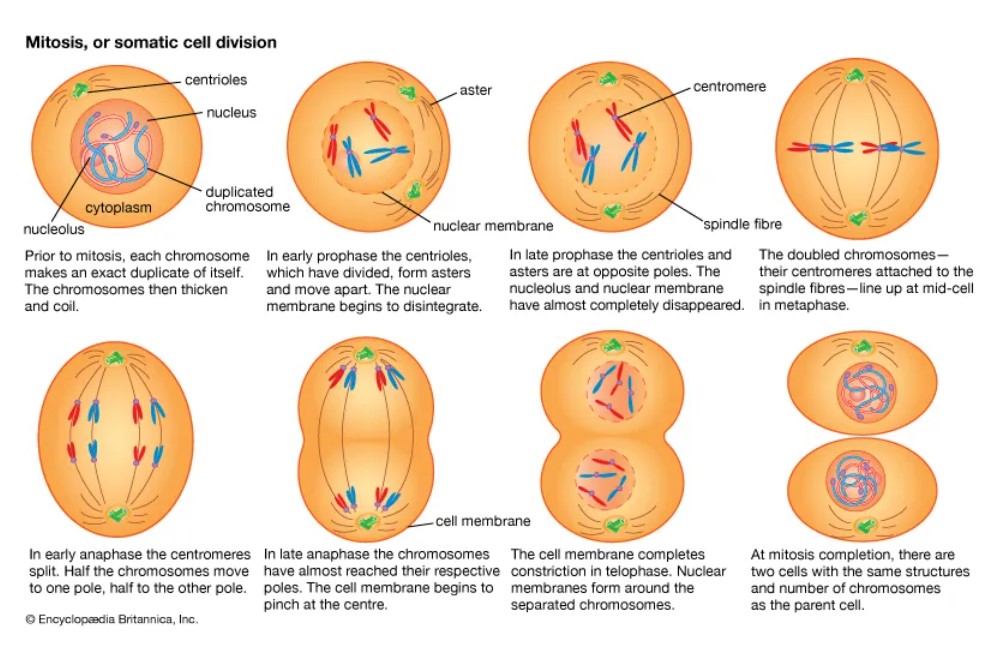In this blog post, we’re going to learn what a cell is!
We hear the term cell a lot. There are cancer cells, which have been plaguing us for a long time, and more recently, the stem cell controversy. Cosmetic companies extract collagen cells from pigs and advertise them as better for your skin. In this way, cells seem common and familiar in our daily lives. However, the average person can’t see cells directly. What are cells? Here’s a look at what scientists have learned about cells and their life history.
All living things are made of cells. However, when we look at an organism, we’re not looking at its cells. That’s because cells are so small – between 1 and 100 micrometers in size – that they’re hard to see with the naked eye. Until the 17th century, cells were not observed. Cells were not recognized, and it was believed that all things were made up of four elements: water, fire, earth, and air, based on Archimedes’ fiction of the temple. This changed in 1665 when scientist Robert Hooke observed dead cellular tissue in a piece of cork under his own microscope and named it a “cell”.
The subsequent invention of improved microscopes, such as Leuven Hooke’s 270x microscope, led to a debate about what a cell is. In 1838, botanist Schleiden published the plant cell theory, which states that all plants are made up of cells, based on observations, and a year later, cytologist Schwann published the animal cell theory, which states that animals, like plants, are made up of cells, in his paper “Microscopic Studies of the Structure and Growth of Animals in Conformity with Plants”. In 1855, the modern cell theory was finalized by Pirhoeffer, who argued that all cells are made from pre-existing cells. The cell theory states that
1. all living things are made of cells.
2. cells are the structural and functional units of life.
3. all cells are made from existing cells.
In other words, it wasn’t until the late 19th century that the general public was able to move away from abstract concepts such as temple fiction and start thinking scientifically about life in terms of cells.
With the definition of what a cell is and the development of the microscope making it easier to observe cells, scholars became interested in the properties of cells, most notably the life history of cells. It was soon realized that the life history of a cell is closely linked to the process of cell division.
Cell division is divided into two major phases: interphase and anaphase. Interphase is the preparation for anaphase and accounts for 80 percent of all cell division. At the end of the division, one cell becomes two, so the amount of contents in the cell must double. Cells do this in interphase. The interphase is further divided into G1, S, and G2 phases. G1 is when the cell is growing for the next division. Because cells go through mitosis and interphase, the first part of interphase, G1, is also the first period that follows mitosis. During G1, cells undergo transcription, which makes RNA, and translation, which makes proteins, to increase the amount of content in the cell. S phase, which stands for synthesis, is where DNA replication occurs. A cell has a nucleus, which contains all the genetic information of the organism and regulates the expression of traits, and inside the nucleus is DNA, which preserves this information. The existence of DNA is essential because cells cannot function without it. When a cell divides into two cells, the genetic information of the organism must be preserved in each cell. Therefore, cells must double the amount of DNA in each cell by having a separate S phase. Like G1, G2 is also a time of preparation for division, but it is shorter than G1 and less active in transcription and translation.
Anaphase is divided into nuclear and cytoplasmic divisions. A cell consists of a nucleus and a non-nuclear part, the cytoplasm. Nuclear division is when the nucleus divides, and cytoplasmic division is when the cytoplasm divides. Nuclear division is categorized into early, interphase, late, and terminal phases. In prophase, the nuclear membrane surrounding the nucleus disappears, chromatin (a collection of DNA and proteins) condenses into chromosomes, and spindles, which are involved in chromosome movement, are synthesized. In metaphase, the spindle threads are connected to the chromosomes, and the chromosomes migrate to the center of the cell. This central plane is called the equatorial plane of the cell. Later, the chromosomes in the equatorial plane completely separate and migrate to the two poles. In telophase, the nuclear membrane is again present on both sides, separating the chromosomes and creating two daughter nuclei. Telophase is linked to cytokinesis. The way the cytoplasm divides differs between animal and plant cells. Plant cells have a cell wall, a rigid wall that surrounds the cytoplasm and separates the cytoplasm by creating a cell plate on the equatorial side of the cell, which later develops into the cell wall. Animal cells, however, do not have a cell wall, so the cytoplasm is separated by membrane invagination, where the cytoplasm curls in from the outside. The process is complex. Here’s how cell division works.

So far, we’ve learned about cells and their life history. As we mentioned earlier, cells are difficult to see with the naked eye and must be observed with the aid of a microscope. The exploration of these invisible cells by scientists is significant because it marks the expansion of human curiosity to include invisible matter.
 I’m a blog writer. I want to write articles that touch people’s hearts. I love Coca-Cola, coffee, reading and traveling. I hope you find happiness through my writing.
I’m a blog writer. I want to write articles that touch people’s hearts. I love Coca-Cola, coffee, reading and traveling. I hope you find happiness through my writing.